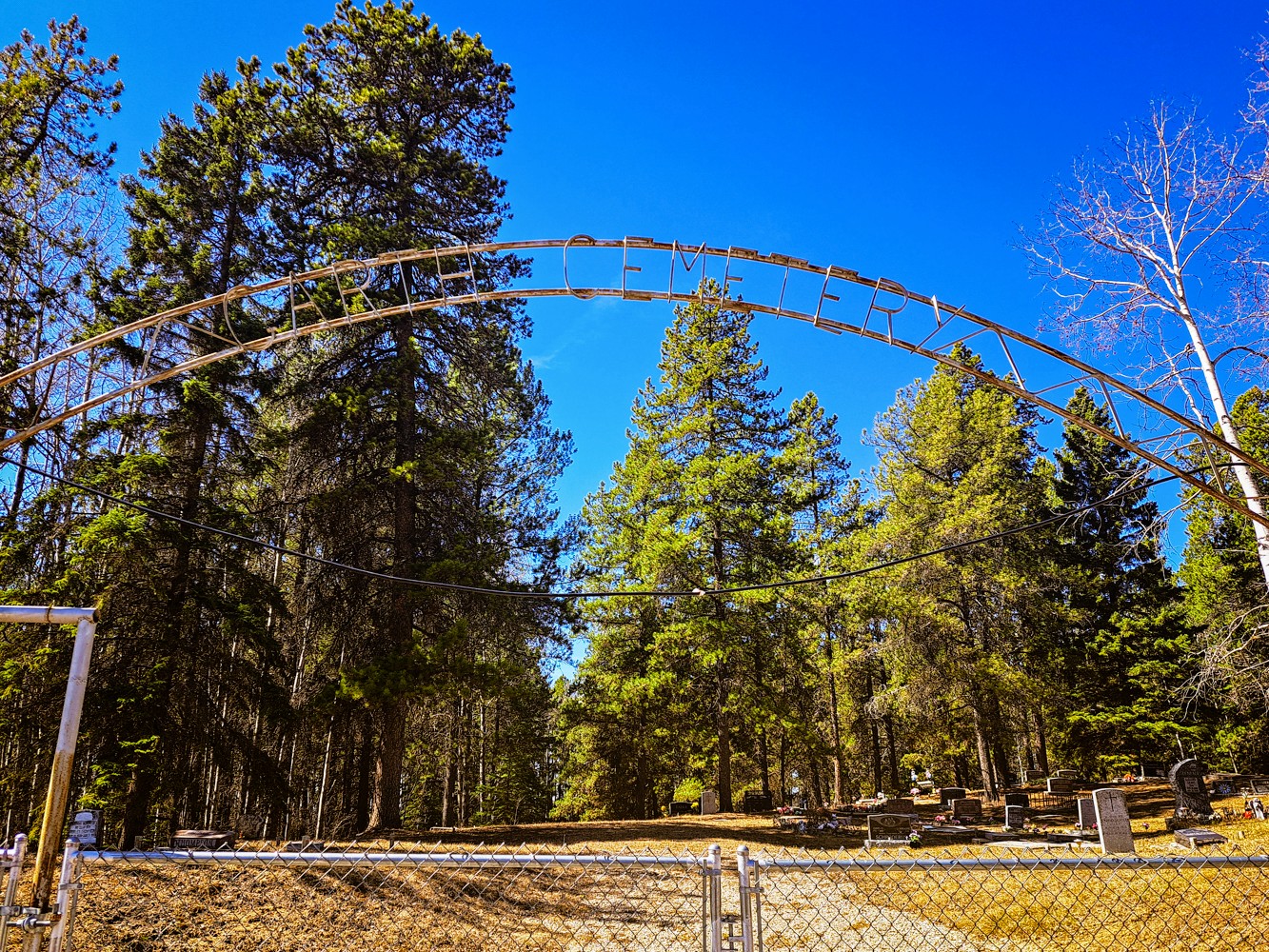SE 13-39-8 W5th

Garth Community Cemetery, located approximately 3 miles west of Rocky Mountain House along Highway 11A in Clearwater County, Alberta, stands as a testament to the region’s rich history and the enduring legacy of its early settlers. This rural cemetery, situated at SE 13-39-8 W5, has been a final resting place for generations, reflecting the community’s growth and the passage of time.
Origins and Development
The origins of Garth Community Cemetery trace back to the early 1960s. In 1960, records indicate that the cemetery was a triangular parcel of land, 1.06 acres in size, registered in the names of trustees, John C. Allen and Mabel Brierley. By 1962, Eldon Alexander negotiated with William J. Fisher for an acreage south of the cemetery. It was discovered that the cemetery was triangular in shape. Mr. Fisher was willing to donate some extra land, and in cooperation with the Red Deer Planning Commission and the Department of Municipal Affairs, the cemetery’s boundaries were expanded to accommodate the growing needs of the community.
Community Significance
Garth Community Cemetery has served as a vital part of the local community, providing a space for families to honor their loved ones. The cemetery’s upkeep and maintenance have been a collective effort, with local residents and organizations contributing to its preservation. This communal involvement underscores the strong sense of community and the respect for heritage that defines the area.
Preservation and Access
Today, Garth Community Cemetery remains an active site, with ongoing efforts to maintain its grounds and records. The cemetery is accessible to the public, and those interested in genealogical research or visiting the graves of ancestors can obtain information through Clearwater County’s official channels .
Legacy
As a rural cemetery, Garth Community Cemetery not only serves as a final resting place but also as a historical record of the area’s development and the lives of its inhabitants. Each headstone and memorial within its grounds tells a story of the individuals who shaped the community, offering a glimpse into the past for future generations.
In summary, Garth Community Cemetery stands as a significant landmark in Clearwater County, Alberta. Its history reflects the growth of the region and the enduring spirit of its community. Through its preservation, the cemetery continues to honor the legacy of those who have passed, ensuring that their contributions to the community are not forgotten.
According to records dating back to 1960, Garth Cemetery was a triangular parcel of land, 1.06
acres in size, registered in the names of trustees John C. Allen and Mabel Brierley.
In 1962, Mr. Eldon Alexander negotiated with William J. Fisher for an acreage south of the
cemetery. It was discovered that the cemetery was triangular. Mr. Fisher was willing to donate
some extra land and in cooperation with the Red Deer Regional Planning Commission, the
Department of Municipal Affairs (which holds title for Improvement Districts, community reserves
and cemeteries) and the Land Titles Office, the property was squared off to be about 240’ by
350’. Later, another piece was donated with the cooperation of Mr. Fisher and Mr. Lasalle, so
that the size of the cemetery now stands at about two and a half acres or 350’ by 310’, with the
title in the name of the Department of Municipal Affairs.
The first burial registered was a baby in 1920.
Source:
The Days before Yesterday – History of Rocky Mountain House District
Published 1977
Rocky Mountain
Garth Cemetery
One day, Tom Gray encountered CNR surveyors near his homestead, lining up railroad rights-of-way. He asked them, since they had their equipment, if they would survey a small section of land for a cemetery.
The surveyors obliged. It was Tom Gray’s intention that residents of the surrounding area would have a cemetery in perpetuity. Later on, grants were made by the Fisher family and Tom’s granddaughter to bring the cemetery to its present 2.49 acres.
Three generations of families now rest in peace in this cemetery, which is named Garth Cemetery. The Grossos, Fishers, Thompsons, and Grays are but a few of the original pioneers. Upon entering Garth Cemetery throug the walking gates, one can see a number of tombstones up on the rise. Closer inspection reveals the Gray Family.
On the very top of the hill, within a small white picket fence, lies the gravesite of Tom and Minnie Elma Gray. Immediately in front of the picket fence lies Tom’s son, Ira and his wife, Josephine. To the right of Ira and on the slope beneath a large elm tree lies Roland, Ira’s son.
Roland Gray used to ride with his dad on his many trips and also drove the old school bus for many years, keeping the children warm in the cold of Alberta Winters.
Missing Person
Minnie’s tombstone is unusual. Along with her own name, it includes an inscription referring to Tom (inscribed “A Missing Person”) and where a tombstone should be for Tom Gray, there stands, instead a huge elm tree, its branches outstretching like a benevolent father sheltering and protecting his family. Tom Gray, however, is not buried in Garth Cemetery, or for that matter, any cemetery!
On the morning of May 16, 1941, Tom Gray was last seen walking with his wooden staff along a country road. He loved to reminisce about the area, and he was not afraid to ford the North Saskatchewan River having done it many times. His footprints led down to the est bank of the river but no trace or information exists as to the rest of the story. Tom Gray was known to carry money, which he loaned out to people who were in need. Also, at 81 years of age, Tom could have fallen into the river quite easily. Whatever the cause, his body was never found and there was no evidence of tracks on the other side.
His disappearance remains a mystery to this day but not his contributions to our area. He always wanted to be known as an honest man, a fair dealing man, a compassionate man. Indeed in the early days, before dentists, it was to Tom Gray that people went to get a tooth pulled. His wish over the years was that he would be known as “an honest horse trader”.
Book: Where the River Brought Them – Pat McDonald – 200 Years at Rocky Mountain House and Area.
Address
SE 13-39-8 W5th
Nearest Populated Centre: Rocky Mountain House,
Province: Alberta
Map Location
Latitude, Longitude
52.3756, -114.95493
Map Location
| Surname | Given Name | Born | Died | Age | Photos | Cemetery | R Code |
|---|---|---|---|---|---|---|---|
The 25 most common surnames found in this cemetery.

The 25 most common given names found in this cemetery.

